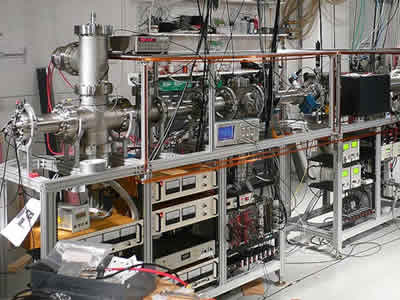This is the apparatus used by researchers in the lab to simulate the chemistry of the early universe (not your typical telescope).
Click on image for full size
Image Courtesy of Daniel Wolf Savin, Columbia University
A Star Is Born... But How?
Daniel Wolf Savin, a senior research scientist at Columbia University's Astrophysics Laboratory, has published a paper on the research he and his colleagues have done on how stars began. In their research, the scientists identified the key chemical reactions that needed to be better understood so they could create a better model of the formation of the first stars.
Once they determined what they needed to study, they built an apparatus to measure the reaction of the materials that created the first stars. Once they measured the reaction, they calculated it.
They learned that hydrogen and helium produced all other elements in the universe. This happened in the first three minutes after the Big Bang and stars made this possible. Through nuclear fusion, stars generated elements such as carbon and oxygen and all the other raw materials necessary for making planets and life. But how did the first stars come to be? It all depends on hydrogen atoms coming together to form hydrogen molecules.
You might also be interested in:
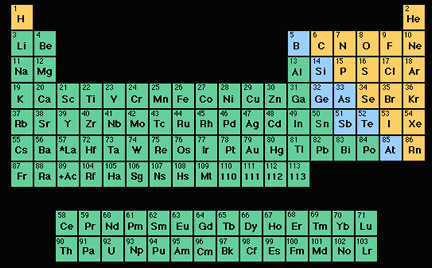
An element (also called a "chemical element") is a substance made up entirely of atoms having the same atomic number; that is, all of the atoms have the same number of protons. Hydrogen, helium, oxygen,
...more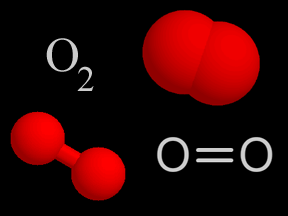
Oxygen (O2) is a kind of gas. A lot of the air you breathe is oxygen. That's a good thing, since we need oxygen to stay alive! About 4/5ths of the air in Earth's atmosphere is nitrogen (N2). Almost all
...more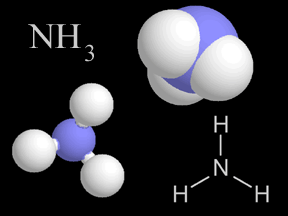
Most things around us are made of groups of atoms bonded together into packages called molecules. The atoms in a molecule are held together because they share or exchange electrons. Molecules are made
...more
Scientists have learned that Mount Hood, Oregon's tallest mountain, has erupted in the past due to the mixing of two different types of magma. "The data will help give us a better road map to what a future
...more
The Earth's mantle is a rocky, solid shell that is between the Earth's crust and the outer core, and makes up about 84 percent of the Earth's volume. The mantle is made up of many distinct portions or
...more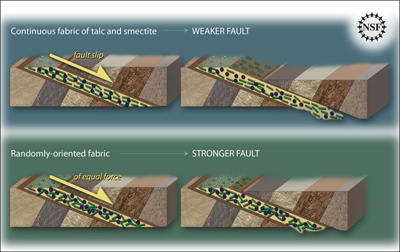
Some geologic faults that appear strong and stable, slip and slide like weak faults, causing earthquakes. Scientists have been looking at one of these faults in a new way to figure out why. In theory,
...more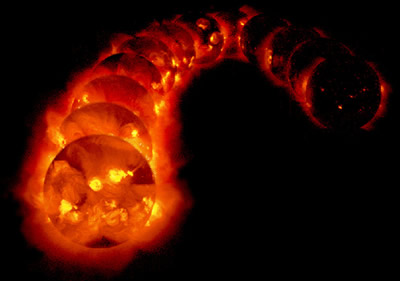
The sun goes through cycles that last approximately 11 years. These solar cycle include phases with more magnetic activity, sunspots, and solar flares. They also include phases with less activity. The
...more


